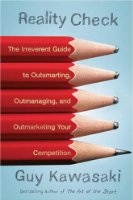 The Elucian Islands in the virtual online world known as Second Life are to host a climate change conference. Speakers will present live from Imperial College London and Stanford University in California, and researchers and university students will attend from the UK and the United States.
The Elucian Islands in the virtual online world known as Second Life are to host a climate change conference. Speakers will present live from Imperial College London and Stanford University in California, and researchers and university students will attend from the UK and the United States.
However, another climate change conference with a difference also begins today in Sweden. That conference hopes to address the issues from a religious rather than a scientific angle with Christians, Muslims, Jews, Chinese Daoists and a native American representative, among others, taking part in the two-day event, which is the first of its kind, apparently.
It is timely then that a new scientific study of technology among religious people is to be published in the first 2009 issue of the International Journal of Innovation and Learning. The paper found that technological uptake seems to hint that the apparently more trusting character of many religious people makes them more accepting of new technologies. Though it pains me to say it, could religious faith by our saving grace?
If the devout are more inclined to trust new technology, then perhaps they will embrace more quickly novel suggestions for tackling the global issue of climate change. Or, does the research simply reveal that this trusting benevolence apparently associated with “being religious simply means that the devout are not quite so cynical of the hidden agendas of others, which make them more susceptible to the wiles of scammers, spammers, and charlatans.
The research paper discusses a relatively small-scale study into the link between strength of religious belief and how this relates to technology acceptance. The researchers wanted to find out whether people of faith are likely to be more trusting of commercial websites than other people.
With increasing commercial globalisation and international travel, the advent of the internet and online communities, the concept of social trust has become a key focus of research. Social trust has always played a crucial role in building societies and is based on the sum total of connections among people, their social networks and how trustworthiness is reciprocated. Civic participation is facilitated by social capital, as reflected in the social networks characterised by norms of reciprocity and trust, the researchers report.
In this context, they used a standard Technology Acceptance Model (TAM) to track online behaviour among a group of users and combined the data with results from an assessment of religious faith known as the Santa Clara Strength of Religious Faith instrument. The aim being to see how faith, trust, and technology mesh in the modern world.
The researchers questioned 161 current and former postgraduate university students and others with varying levels of internet experience and different religious convictions. They assessed religious strength based on dedication to prayer and how much a person’s faith plays a role in each individual’s daily life. Attitudes to ecommerce were assessed by testing their interaction with an experimental ecommerce website and asking whether users felt the website operated with their best interests in mind and whether it is run competently and sincerely.
An analysis of the results suggests that fundamentally religious faith increases benevolence, which in turn influences perceived ease of use, perceived usefulness and behavioural intention. The more religious were more trusting, it seems.
Although one might suggest that this would imply gullibility, the researchers extrapolate their findings to say that communities with strong religious faith may be among the leaders rather than the followers when it comes to technology acceptance, the early adopters in other words. Those people may be the ones paving the way for less trusting and accepting individuals.
The researchers say that it is surprising that religion, given its cultural prominence in some parts of the world, has been largely overlooked in studies of this kind. They hope that the present research will enthuse sociologists, economists, and business experts to investigate more closely how religious faith might affect internet use, with a view to improving the experience.
But, the big question of the day is who will you be listening to, the scientists virtualised in second life or those people of faith in Sweden?
Stuart J. Barnes (2009). Strength of religious faith, trusting beliefs and their role in technology acceptance International Journal of Innovation and Learning, 6 (1), 110-126
 It’s that time of year again. The shops have been full of Xmas
It’s that time of year again. The shops have been full of Xmas  Dioxins Before Swine – Irish pork is off the menu, according to the BBC.
Dioxins Before Swine – Irish pork is off the menu, according to the BBC. If you ever thought genetics was only about disease, then check out the popular SNPs list on
If you ever thought genetics was only about disease, then check out the popular SNPs list on 
 The
The  Welcome fellow twitterers, don’t forget to follow me on
Welcome fellow twitterers, don’t forget to follow me on  All of what Kawasaki discusses is about people whether he’s explaining the top ten lies of venture capitalists or how old geezers can capture or enrapture the youth market, whether he’s telling you about how late he came to blogging or how creating a community is not just the latest fad, something
All of what Kawasaki discusses is about people whether he’s explaining the top ten lies of venture capitalists or how old geezers can capture or enrapture the youth market, whether he’s telling you about how late he came to blogging or how creating a community is not just the latest fad, something  The
The  My latest science news is now online in the spectroscopyNOW ezine. This week:
My latest science news is now online in the spectroscopyNOW ezine. This week: